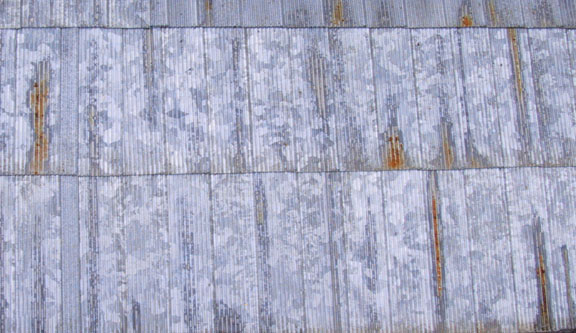Etching with acid
!!CAUTION!!
The fumes are very toxic!!
Always use outside, with good ventalation. Make sure water is
handy to dilute any spills.
The acid is Muriatic Acid, found at most hardware stores.
I built a small fixture of Masonite and wood, which allows a
piece of sheet metal to stand almost vertical. There is a gap
in the bottom lip to allow the acid to drain off. The fixture
rests on top of a plastic container, which is the resevoir for
the acid. A second plastic container hold rinse water. I use
two sizes of brushes, 1/2" and 1/8" wide. A simple
pair of wood tweezers finish off the tools.
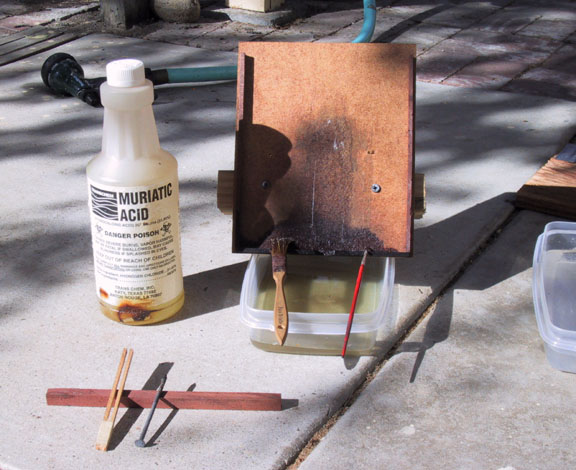
!!CAUTION!!
Muriatic Acid will burn holes
in clothing and skin. Use care when pouring and brushing acid.
Galvanized metal is coated with a zinc layer which protects
the steel from rusting. Over time, the zinc is erroded, and the
steel rusts. Here we use acid to etch away the coating in specific
areas. Look at older sheet metal and study the patterns that
develope. For this project, I wanted roofing that is just starting
to rust, so I streaked some areas, and left the rest un touched.
Notice how the acid bubbles up as it attacks the zinc coating.
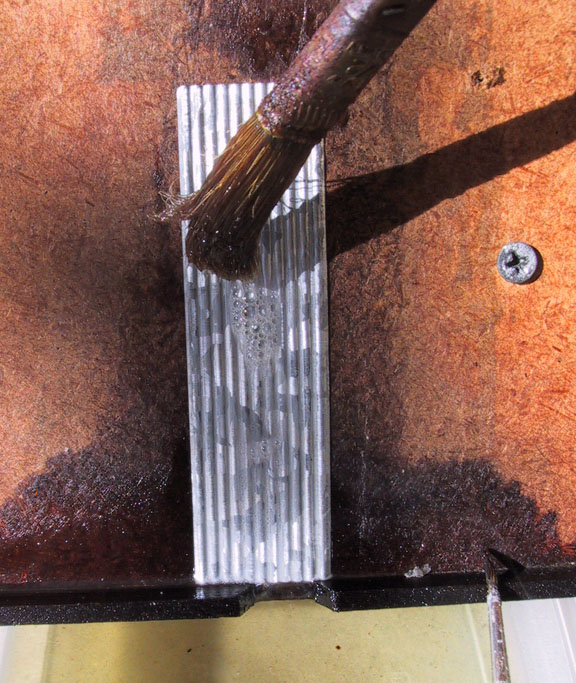 The surface of the sheet metal will change
colors reflecting the degree to which the zinc is etched away.
The areas where the steel is completely bare will be shiny. These
are the spots that will begin to rust right away. The more lightly
etched areas will rust over time.
The surface of the sheet metal will change
colors reflecting the degree to which the zinc is etched away.
The areas where the steel is completely bare will be shiny. These
are the spots that will begin to rust right away. The more lightly
etched areas will rust over time.
 Use the wooden tweezers to move the sheet
metal to the water bath to rinse the acid and stop the etching
process.
Use the wooden tweezers to move the sheet
metal to the water bath to rinse the acid and stop the etching
process.
 Leave the sheets in the water as you etch
the rest of the pieces.
Leave the sheets in the water as you etch
the rest of the pieces.
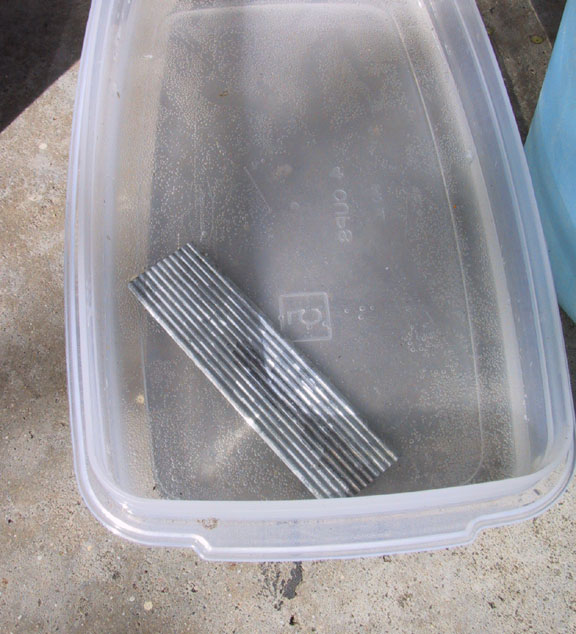 When all the pieces are etched, remove
them from the water bath and spread them out to dry. Occasionally
spray them with water to start the rusting process. Notice that
rust is just starting on the upper piece.
When all the pieces are etched, remove
them from the water bath and spread them out to dry. Occasionally
spray them with water to start the rusting process. Notice that
rust is just starting on the upper piece.
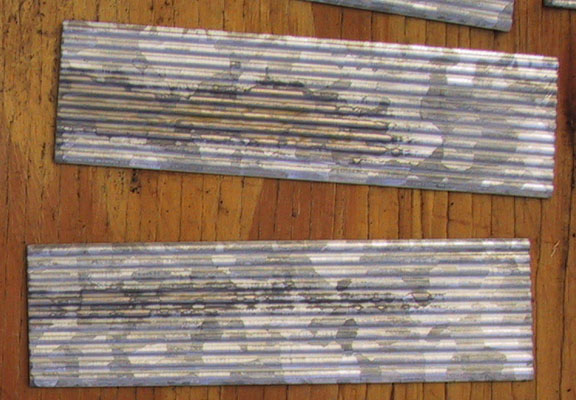 This is a view of the finished installed
roof on the freight house. The rusted areas are developing deeper
brown colors, and will continue to change with time.
This is a view of the finished installed
roof on the freight house. The rusted areas are developing deeper
brown colors, and will continue to change with time.
